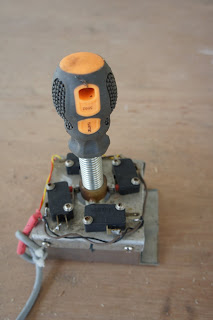
This blog has been in existence for slightly over 2 years now. It served as a channel to share some of my thoughts and activities. The future path is to find new and better ways to improve the operations and management of bird houses - tried and tested solutions along with proven products shall be featured here.
In my view, there are many myths & half truths propagated out there in cyberspace. An example is the selection of tweeters; not many folks can tear through some of the technical spin around it. The best choice is to derive from real experiments with birds, not merely based on technical discussion & specs. This is certainly one subject I would investigate further with comparative tests.
What's more? I intend to convert solutions into products such as the motorized trolley in development.
What's the intention? I am setting up a fund in aid of building a technical school in Sangklaburi, a remote town near the Thailand & Myanmar border. This is not my personal project but would contribute some efforts to its realization. Profits derived would be channel towards this cause.
Some may have come across this in my other blog:
http://my-swiftlet-farm.blogspot.com/2010/11/visitor-on-special-mission.html
If you like to find out more, please visit these blogs:
The fund raising walk:-
http://walkforeducation.wordpress.com/
The Technical School Project:-
http://prsarkartechnical.wordpress.com/
I hope that if you find my blog informative & useful, be kind enough to contribute too. In return I offer services in areas of my competency.























